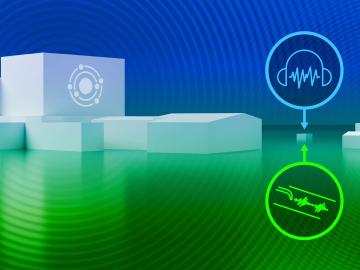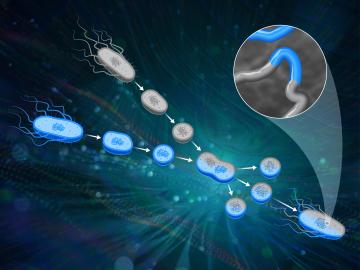
Filter News
Area of Research
- Advanced Manufacturing (1)
- Biology and Environment (8)
- Electricity and Smart Grid (1)
- Energy Science (14)
- Functional Materials for Energy (1)
- Fusion and Fission (4)
- Fusion Energy (4)
- Isotopes (4)
- Materials (20)
- National Security (13)
- Neutron Science (7)
- Nuclear Science and Technology (12)
- Nuclear Systems Modeling, Simulation and Validation (1)
- Supercomputing (17)
News Topics
- (-) Advanced Reactors (18)
- (-) Cybersecurity (11)
- (-) Frontier (11)
- (-) Isotopes (12)
- (-) Machine Learning (18)
- (-) Physics (23)
- 3-D Printing/Advanced Manufacturing (40)
- Artificial Intelligence (22)
- Big Data (20)
- Bioenergy (32)
- Biology (33)
- Biomedical (28)
- Biotechnology (5)
- Buildings (17)
- Chemical Sciences (20)
- Clean Water (7)
- Composites (4)
- Computer Science (59)
- Coronavirus (34)
- Critical Materials (6)
- Element Discovery (1)
- Energy Storage (46)
- Environment (65)
- Exascale Computing (11)
- Fossil Energy (1)
- Fusion (20)
- Grid (20)
- High-Performance Computing (19)
- Hydropower (8)
- Irradiation (1)
- ITER (2)
- Materials (39)
- Materials Science (53)
- Mathematics (2)
- Mercury (2)
- Microscopy (21)
- Molten Salt (2)
- Nanotechnology (26)
- National Security (19)
- Neutron Science (47)
- Nuclear Energy (41)
- Partnerships (8)
- Polymers (12)
- Quantum Computing (7)
- Quantum Science (23)
- Security (7)
- Simulation (6)
- Space Exploration (6)
- Summit (24)
- Transportation (25)
Media Contacts

Doug Kothe has been named associate laboratory director for the Computing and Computational Sciences Directorate at ORNL, effective June 6.

Two decades in the making, a new flagship facility for nuclear physics opened on May 2, and scientists from the Department of Energy’s Oak Ridge National Laboratory have a hand in 10 of its first 34 experiments.

The Frontier supercomputer at the Department of Energy’s Oak Ridge National Laboratory earned the top ranking today as the world’s fastest on the 59th TOP500 list, with 1.1 exaflops of performance. The system is the first to achieve an unprecedented level of computing performance known as exascale, a threshold of a quintillion calculations per second.

How an Alvin M. Weinberg Fellow is increasing security for critical infrastructure components

Researchers at ORNL are teaching microscopes to drive discoveries with an intuitive algorithm, developed at the lab’s Center for Nanophase Materials Sciences, that could guide breakthroughs in new materials for energy technologies, sensing and computing.

Scientists are using Oak Ridge National Laboratory’s Multicharged Ion Research Facility to simulate the cosmic origin of X-ray emissions resulting when highly charged ions collide with neutral atoms and molecules, such as helium and gaseous hydrogen.

An Oak Ridge National Laboratory team developed a novel technique using sensors to monitor seismic and acoustic activity and machine learning to differentiate operational activities at facilities from “noise” in the recorded data.

A team of researchers has developed a novel, machine learning–based technique to explore and identify relationships among medical concepts using electronic health record data across multiple healthcare providers.

ORNL scientists had a problem mapping the genomes of bacteria to better understand the origins of their physical traits and improve their function for bioenergy production.

ORNL and the Tennessee Valley Authority, or TVA, are joining forces to advance decarbonization technologies from discovery through deployment through a new memorandum of understanding, or MOU.


